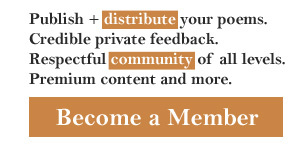This is an analysis of the poem The Canterbury Tales; The Prioresses Tale that begins with:
THE PRIORESSES TALE
The prologe of the Prioresses tale.... full text
Elements of the verse: questions and answers
The information we provided is prepared by means of a special computer program. Use the criteria sheet to understand greatest poems or improve your poetry analysis essay.
- Rhyme scheme: a a X XbcXXXX bdXeXXf XXXXXXc XXcbXXe XXXXXXX a XXXXXgg gdgXeXX XhXXhXX XefXXcc XXXXXXf XhXXhee bXbXXXX cfcfXXX XfXfXfX XiXiiXX XfXffcX gcXccXf XXXXXXg XXbjjX X XXfXXXX gXgXXXX XcXccXX gXgffXX fXXXXXX XXXXbXX XXXkkXX fXfXfdX jbXXXXee fXXXXXh XbXbbXX bXXXX
- Stanza lengths (in strings): 1,1,1,7,7,7,7,7,1,7,7,7,7,7,7,7,7,7,7,7,7,7,6,1,7,7,7,7,7,7,7,7,8,7,7,7,7,9,
- Closest metre: iambic pentameter
- Сlosest rhyme: no rhyme
- Сlosest stanza type: tercets
- Guessed form: blank verse
- Metre: 01001 010001001 01001010 1111111100 000111011 11101110 100011010 110101011 1000110110 10101110 1001111111 011001110 1101100110 01010111111 1111100110 1110010101 01111111 110111101 1110100101 110001101 1110011010 011011111 100101010 1101001100 101111000 110111100 1111100110 1101001101 111001100 1101011110 0101101111 1100111101 100111100 1111101110 1101011111 1110010110 1111110111 1011111011 110001001 11010011 100101010 100101011 111011010 100110010 110111111 10111101101 0101010111 1101010110 10111000101 110011111 110101111 0001010101 111010110 0111010101 0101010101 111101101 1110111110 0101011010 1111011011 01101111101 1101110110 1101010101 0101111001 110111011 1111101010 11001100110 1111011100 0101010110 1110011010 110100011 1101011000 1111111111 1101010101 110111111 1111010101 111111101 1101010111 1001010010 1111011010 0111001101 1101011101 0101110111 1011111111 1100110101 101111101 0011110111 1110100010 1111111100 1001100100 0101010100 1101111100 0101010001 1111110101 110101011 110111010100 0101110100 1101111011 1111011100 1101100001 10101101 0100110111 1101011010 111110010 0101111011 1100111111 1101000101 010101101 0101010101 1111010101 111010100 1101010101 1111110110 0001011010 1101110111 0110110110 1010111000 11010101010 0100100101 1100101110 101101011 1101110101 011111111 1101100111 1110011111 11010101010 111010011 1111010110 111100111 1101100111 01111111 110100100 11010101001 01101011 0101100011 0101111111 1001110111 11010101111 011100111 1011011111 1111101101 011011101 1111110111 110011111 111110010 010101101 1111011011 0100111101 1100110101 11011010111 11111111 010110111 1101110100 0100111011 0110111110 111110001 1011100101 1011101111 1111000110 111110011 11010011011 010100101 1101000101 1101100101 1101000101 111101101 010111011 0101010101 1100110101 111010010 1101100101 1101010010 1101010111 010101000 1001100110 101001100 1101100110 010101011 10101111 01101101 0011010110 0101010101 100111110 111110001 1011110101 100111111 1101111101 0101110100 100110111 11010100010 1111010111 1111010111 11011111010 11110100010 0101111101 110011010 011111101 111111110 1101110101 110111001 1101000101 1111110111 0101010101 1110110110 111111110 0111111101 0101000110 1111111111 1111010111 1011111110 0100110101 1111100001 110011101 110111111 1101011110 01101111100 0101010111 0111111001 1111011100 1101010101 111010111 1111110101 1111111010 010111010 1011010101 1101111101 11010010001 1001001011 1001010101 1101111101 111010110 0110100100 1011010101 11111101010 100101110 11011010 110000100101 101001001
- Amount of stanzas: 39
- Average number of symbols per stanza: 243
- Average number of words per stanza: 46
- Amount of lines: 237
- Average number of symbols per line: 39 (medium-length strings)
- Average number of words per line: 8
Mood of the speaker:
The punctuation marks are various. Neither mark predominates.
The author used lexical repetitions to emphasize a significant image; o, thy, i, to, as, he, and, hym, this, day, it, hir, she, that, his, me are repeated.
The poet used anaphora at the beginnings of some neighboring lines. The same words the, o, and, i, to are repeated.
The author used the same words the, this at the beginnings of some neighboring stanzas. The figure of speech is a kind of anaphora.
There is a poetic device epiphora at the end of some neighboring lines tale is repeated).
The poet repeated the same words tale, ' at the end of some neighboring stanzas. The poetic device is a kind of epiphora.
If you write a school or university poetry essay, you should Include in your explanation of the poem:
- summary of The Canterbury Tales; The Prioresses Tale;
- central theme;
- idea of the verse;
- history of its creation;
- critical appreciation.
Good luck in your poetry interpretation practice!
Pay attention: the program cannot take into account all the numerous nuances of poetic technique while analyzing. We make no warranties of any kind, express or implied, about the completeness, accuracy, reliability and suitability with respect to the information.

